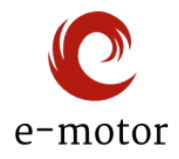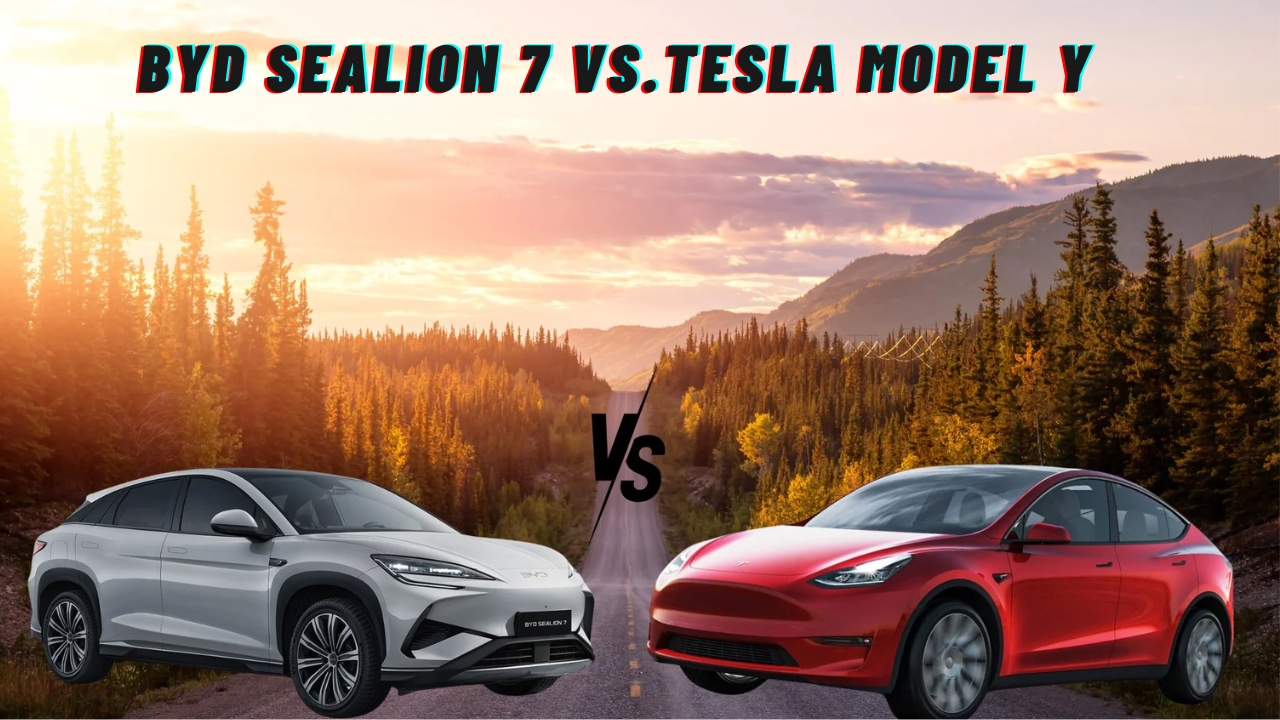The stakes are high. Tesla’s dominance faces its biggest challenge yet from the Chinese manufacturer that sold more new energy vehicles worldwide than Tesla in 2023. For Aussie buyers, this means better value, more choices, and genuine competition in the premium electric SUV space.
Pricing Showdown – The Numbers That Matter
BYD Sealion 7 Pricing Structure
BYD has thrown down the gauntlet with aggressive pricing that undercuts Tesla significantly. The Sealion 7 lineup includes:
- Premium (Single Motor RWD): $54,990 plus on-road costs
- Performance (Dual Motor AWD): $63,990 plus on-road costs
Tesla Model Y Pricing Reality Check
Tesla’s 2025 Model Y received substantial price increases but offers two main variants:
- RWD Single Motor: $58,900 before on-road costs (standard) / $63,400 plus on-road costs (Launch Series)
- Long Range AWD: $68,900 before on-road costs (standard) / $73,400 plus on-road costs (Launch Series)
The pricing advantage clearly goes to BYD. Even comparing like-for-like, the Sealion 7 Premium costs nearly $4,000 less than the basic Tesla Model Y RWD.
Performance Powerhouse Comparison
BYD Sealion 7 Performance Specs
Both Sealion 7 variants pack serious punch thanks to BYD’s 82.56kWh Blade battery technology:
Premium Single Motor:
- Power Output: 230kW/380Nm
- 0-100km/h: 6.7 seconds
- Range: 482km (WLTP)
Performance Dual Motor:
- Power Output: 390kW/690Nm
- 0-100km/h: 4.5 seconds
- Range: 456km
Tesla Model Y Performance Numbers
Tesla’s updated 2025 Model Y brings improved performance across the board:
RWD Single Motor:
- 0-100km/h: 5.9 seconds – a full second faster than the previous model
- Range: 466km (up from 455km)
Long Range AWD:
- 0-100km/h: 4.8 seconds, dropping to 4.3 seconds with Acceleration Boost software
- Range: 551km
Performance verdict: The BYD Sealion 7 Performance matches Tesla’s acceleration prowess while delivering competitive range. Tesla edges ahead in overall range with the Long Range variant.
Technology and Features Face-Off
BYD’s Tech Arsenal

The Sealion 7 doesn’t hold back on technology features. BYD’s signature 15.6-inch rotating touchscreen takes center stage, offering both landscape and portrait orientations. It’s colossal yet graphically sharp and can rotate 90 degrees into a portrait orientation.
Standard features include:
- Vehicle-to-Load (V2L) functionality
- Nappa leather upholstery
- Panoramic sunroof with electric sunblind
- Pop-out door handles
- All-glass roof
Tesla’s Refined Experience
The 2025 Model Y brings substantial upgrades to Tesla’s minimalist philosophy:
- 15.4-inch central touchscreen (up from 15 inches)
- 8.0-inch rear touchscreen behind the centre console for rear passengers
- Power-folding rear seats that split 40/20/40
- Ventilated front seats and ambient cabin lighting
- Acoustic glass for a quieter ride
Technology winner: Both offer impressive tech, but Tesla’s ecosystem integration and over-the-air updates give it a slight edge for long-term functionality.
Charging Infrastructure Reality
The Supercharger Advantage
Tesla’s Supercharger network remains the gold standard in Australia. Tesla Superchargers trail behind Chargefox and Evie Networks in number of locations but are known to be more reliable. Tesla claims 99.97% global uptime for the Supercharger Network.
The game-changer: Select Tesla Superchargers are now open to vehicles outside of Tesla that are NACS-equipped or have NACS DC adapters.
BYD Charging Compatibility
Here’s where it gets interesting for BYD owners. BYD Seal drivers with vehicles built from March 2024 onwards can access Tesla Supercharger V3 stalls. However, BYD Australia has confirmed that Sealion 7 vehicles are compatible with Tesla V3 Superchargers, removing a major barrier for long-distance travel.
BYD’s charging reality: The Sealion 7 can utilize the extensive public charging network including Chargefox, Evie Networks, and now Tesla Superchargers, giving owners excellent flexibility.
Interior Space and Practicality
BYD Sealion 7 Cabin
Space is where the Sealion 7 shines. With a spacious cabin, upscale finishes, and solid build quality, BYD has prioritized passenger comfort. The SUV offers genuine family-friendly practicality with generous rear seat space and cargo capacity.
Tesla Model Y Interior
The Model Y measures 4751mm in length, 2129mm in width, and has a 2890mm wheelbase. Cargo space is substantial, boasting up to 2158 liters with the rear seats folded down. The higher-end interior materials and perforated leather-look trim elevate the cabin experience.
Practicality verdict: Both vehicles offer excellent family-friendly space, with Tesla slightly ahead in maximum cargo capacity.
Safety and Build Quality
BYD Safety Credentials
While the car hasn’t been tested by ANCAP, European NCAP gave the SUV (called the BYD Seal-U overseas) a five-star safety rating in 2023. Every other BYD sold in Australia thus far has achieved a five-star ANCAP safety rating.
Standard safety features include:
- Autonomous emergency braking
- Adaptive cruise control
- Lane keep assist
- 360-degree camera system
- Seven SRS airbags
Tesla Safety Standards
The pre-facelift Tesla Model Y received a five-star ANCAP safety rating in 2022, based on tests conducted by Euro NCAP, scoring impressively across all categories.
Both vehicles prioritize safety, with comprehensive driver assistance systems as standard.
Warranty and Ownership Costs
BYD Ownership Experience
BYD offers competitive ownership costs. Capped price service costs average $317 per annum, working out to just over $1900 across six years. Service intervals are set at 12 months or 20,000km.
Warranty coverage includes:
- Vehicle: 6 years/150,000km
- Battery: 8 years/160,000km
Tesla Ownership Reality
Tesla’s warranty is at four years or 80,000km, inferior to those of all major rivals. The battery warranty is better, at eight years/160,000km for the RWD and eight years/192,000km for the Long Range.
Ownership winner: BYD clearly wins on warranty length and service cost transparency.
Market Reception and Future Outlook
Sales Performance
Tesla faces pressure from multiple fronts. Model Y deliveries declined from 28,709 in 2023 to 21,253 in 2024, reflecting both a softening in the Australian car market and increased competition from new brands.
EVDirect CEO expects the Sealion 7 to become the third best-selling BYD in Australia in 2025, behind the dominant Shark and the petrol-electric Sealion 6 SUV.
Future Technology
BYD isn’t standing still. BYD’s new Super e-Platform vehicles can charge at speeds of up to 1000kW, delivering 400kms range in just five minutes. While this technology isn’t yet available in the Sealion 7, it shows BYD’s commitment to charging innovation.
The Verdict – Which Should You Choose?
Choose BYD Sealion 7 If:
- Budget matters: Save $4,000+ compared to equivalent Tesla
- Warranty coverage is important: Longer vehicle warranty period
- You want latest features: Rotating screen and V2L functionality
- Service costs concern you: Transparent, competitive servicing
Choose Tesla Model Y If:
- Maximum range is crucial: Up to 85km more range in Long Range variant
- Ecosystem integration matters: Seamless software updates and Tesla integration
- Resale value is important: Proven track record in Australian market
- Supercharger exclusivity: Access to Tesla-only charging locations
Bottom Line
The BYD Sealion 7 represents a genuine threat to Tesla’s dominance. With sharp pricing, generous equipment, and impressive engineering, the positives far outweigh the negatives. For most Australian families, the Sealion 7 offers better value for money without sacrificing performance or features.
Tesla still leads in software sophistication and charging infrastructure maturity, but BYD’s aggressive pricing and impressive feature set make it the compelling choice for value-conscious buyers. This competition ultimately benefits all Australian EV buyers through better products and more competitive pricing.
Our recommendation: The BYD Sealion 7 Premium offers exceptional value for most buyers, while Tesla Model Y remains the choice for those prioritizing maximum range and ecosystem integration.
Short FAQs
Q: Is the BYD Sealion 7 compatible with Tesla Superchargers?
A: Yes, new Sealion 7 vehicles can charge at Tesla V3 Supercharger stations in Australia.
Q: Which has better warranty coverage?
A: BYD offers 6 years/150,000km vehicle warranty versus Tesla’s 4 years/80,000km.
Q: What’s the price difference between BYD Sealion 7 and Tesla Model Y?
A: BYD Sealion 7 starts at $54,990 versus Tesla Model Y at $58,900, saving approximately $4,000.
ALSO READ: 2025 Geely EX5 Power Up Your Savings with EOFY Trade-In Deal

